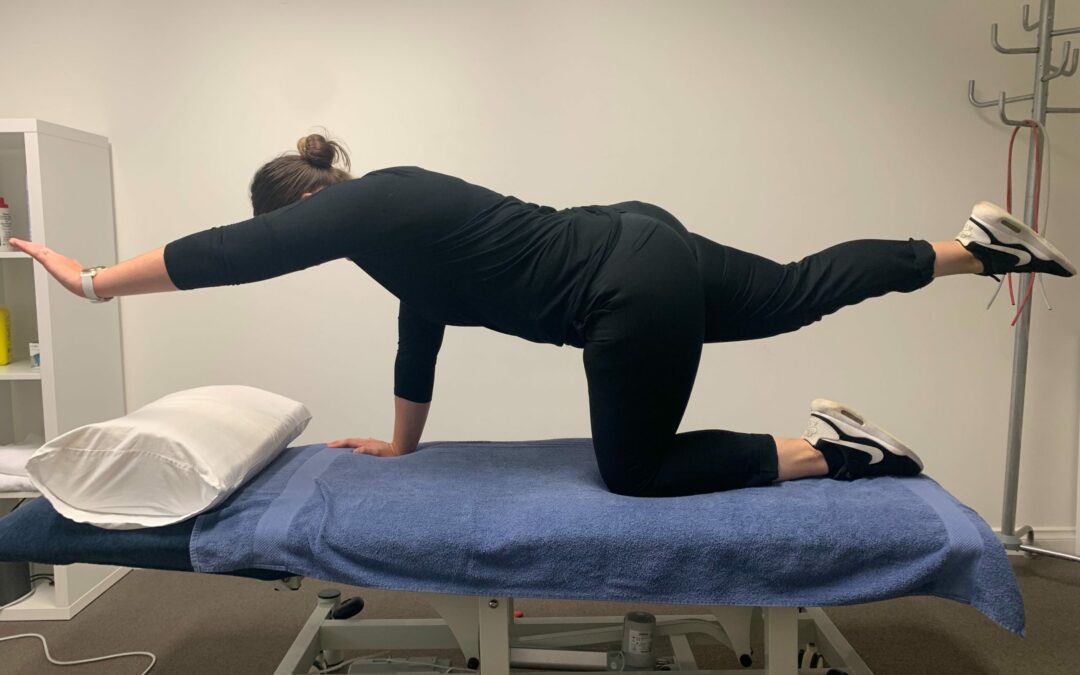March is endometriosis awareness month! Exercise Physiologist, Danielle, is here to give some insight into how exercise can play a role in helping to reduce symptoms of endometriosis.
What is endometriosis?
Endometriosis is a chronic health condition affecting one in ten women worldwide. It is a gynecological condition where tissue grows outside of the uterine cavity, which can cause symptoms such as inflammation, bloating, pelvic pain, discomfort and cramping. Unfortunately, there is little information available about how exercise can help to manage endometriosis and its symptoms.
However, as endometriosis involves inflammatory processes it is ideal to incorporate exercise into management of the condition. Pain and discomfort can cause a guarding mechanism in the body – where you brace your pelvic floor, abdominal wall and hip flexors to protect from pain. Keeping this in mind, a goal of exercise should be to restore length and strength in these muscles.
What can I do?
You can’t strengthen a tight muscle, so first of all let’s start with some stretches and activation exercises.
Glute and hip flexor stretches – such as a supine glute stretch allows your hip muscles to stretch. Gently applying pressure through the bent leg will open up through your hip flexors – which can help to relieve muscle tightness if you have been curled up in pain.
Back and side stretches – a childs pose stretch is a great restorative position that allows you to focus on your breath and lengthen through pelvic floor. You can have your arms out in front of the body, or crawl them to the side of the mat to get a stretch through the muscles that line the side of your back.


Pelvic floor activation – we want to lengthen and strengthen the pelvic floor, ensuring that we know how to both activate and relax this muscle. Imagine that your pelvic floor is an elevator in building, as you breathe in imagine that the elevator is going from the ground floor to the roof and you are pulling up through this muscle. Then, as you breathe out, relax your pelvic muscles and imagine that the elevator is going down from the roof to the ground floor and opening the doors.
Then what?
We then want to work on activation and strength through the core, pelvic floor and glute muscles.
Glute bridges with resisted hip abduction – is a great exercise that targets each of the key muscle groups, as well as offering a stretch in hip flexors and massages into paraspinal muscles. Focus on lifting up each vertebrae of the spine one at a time as you lift your hips towards the ceiling.
Bird dog balances – works to improve core stability, glute activation and stability in the one exercise. Focus on maintaining even hip positioning throughout the exercise and avoiding arching or dropping your back.


With each of the exercises, focus on connecting your breath to the movement to avoid building up intra-abdominal pressure which will put increased pressure on the core and pelvic floor.
It’s a good idea to avoid high impact exercises such as running, jumping or burpees so that you give your body time to recovery and heal when it is inflamed or in pain.
If you are interested in learning more about how exercise can help you with your endometriosis, or other women’s health conditions including pregnancy and polycystic ovarian syndrome, send me an email or give the clinic a call on 5264 6098 to book an appointment.
Danielle Kloosterman
Exercise Physiologist
